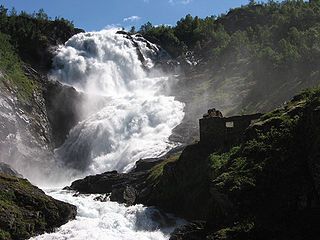"The Law of Marine and Hydrokinetic Energy" May Explain Clean Energy's Lethargy
As one can imagine, the law firms that work for the renewable energy industry are quite busy in helping their clients navigate the issues that surround the development of major projects, whether they’re in solar, wind, biomass, etc. The large law firm Stoel Rives specializes in this space, and was good enough to speak with me at length at last month’s Renewable Energy Finance Forum; they even sent me free copies of a dozen or so comprehensive and beautifully printed documents that summarize the major legal issues confronting developers in each major arena within the clean energy industry.
I had to laugh when I looked at the first couple of pages in the publication: “The Law of Marine and Hydrokinetic Energy,” as it shows at a glance one of the major reasons that the United States is moving at a snail’s pace with respect to the development of alternative energy technologies.
Imagine, if you will, that you’ve invented some new way of extracting energy out of moving water, and you have an eye towards commercializing it. You come across this manual, pour yourself a hot cup of coffee, and begin reading. The introduction includes:
The siting of a marine or hydrokinetic energy project will involve numerous federal, state, tribal, and non-governmental entities charged with or having substation interests in laws, regulations, and program relating hydropower facilities, water quality, and in-water discharges, state and federal lands located beneath the sea, coastal resources and marine sanctuaries, underwater and other cultural resources, shipping and navigation, crabbing and fishing, endangered and threatened species, marine mammals, migratory birds and seabirds, and recreational and public safety, among other things.
On the next page you find a partial list of the agencies that will be involved in the approval of your project. The main two that are associated with the power itself are the Federal Energy Regulatory Commission (FERC) and the Department of Interior’s Bureau of Ocean Energy Management (BOEM). But beyond there, you encounter:
- The U.S. Army Corps of Engineers
- U.S. Coast Guard
- National Marine Fisheries Service
- U.S. Fish and Wildlife Services
- Federal land owner agencies
- Affected tribes
- State agency administering the Clean Water Act
- State lands manager
- State fish and wildlife agencies
- State water resources managers
- State and tribal historic preservation officers
- State energy facility siting councils
- County commissions
- Local governments
- Ports
- Fishing and crabbing commissions
- Non-governmental interest groups
- Public utility districts and investor-owned utilities
- Private landowners
- Cable committee (I’m not sure what this is)
You think to yourself, “Well, I could hire Stoel Rives; they obviously have experience here.” But wouldn’t a more rational and likely conclusion be: “No. Sorry, make that ‘Hell No.’ Anyone who thinks he’s going to placate 22 different bureaucratic agencies, each a gigantic dispenser of red tape, each doing its best to stop your progress, is a complete moron.”


Which is why only the government back MANY MANY years ago was the only ones to successfully put up hydro-electric dams. Even DOE would be hard pressed to assemble the approvals necessary to put up a new dam in the United States. Even in the best of conditions (no unique species to the river, deep canyon surrounded by federal land, regional support) they would still have a dozen or so agencies that had some level of approval.
This is also a problem for offshore wind. Fortunately, there is a significant effort to streamline the process under BOEM (http://www.boem.gov/)
That’s good news. Still sounds like a pain the neck, though.